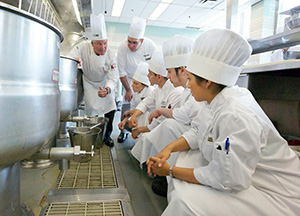Are Your Newest Hires Trained to Work Safe?
Special Promotional Feature
New employees are usually eager to get to work, and show their immediate value to their boss and new coworkers. While many claim to learn the job by doing new tasks on their own and pride themselves on being a “quick study,” as a supervisor or manager, making sure they’re familiar with onsite safety procedures and work practices can be a much better place to start with your new or young workers.
 You are responsible for providing a safe and healthy workplace
You are responsible for providing a safe and healthy workplace
As an employer, you are responsible for the health and safety of your workers. Having orientation and training programs in place, and documenting your staff’s participation is a good way to ensure that everyone receives consistent and relevant training. “Employers should feel confident that their workers have learned safe work procedures and are well-trained to do their jobs,” says Glen McIntosh, manager, new and young worker and small business with WorkSafeBC. “After training, ask them for a replay. Get workers to show you, or tell you, how to do each task.”
McIntosh’s advice can help open up a dialogue with new employees who may be afraid to speak up. Newer hires may feel uncomfortable asking for help, as they want to be seen as competent in their new roles. Some may prefer to simply try the tasks for themselves, but often lack the experience and training required to stay safe on the job. Training for new and young workers —age 15-25 — is important, especially as they are most at risk of being injured when they are new to their jobs. More than half of all serious injuries occur during the first six months of employment.
What you can do to help
There are a number of components to young and new worker orientation and training; here are three key steps to help prevent workplace injuries.
- Use a checklist
This can make the orientation easier to follow and more thorough. It can also serve as a record of employee training. Here’s a sample checklist that you can customize to meet the orientation needs of your workplace.
- Train young and new workers with particular focus on:
- Performing tasks safely
- Operating machines and equipment safely
- Using and maintaining any required personal protective equipment, such as gloves or goggles
- Following safe work procedures
- Document and replay
Have your workers show you how to do the task after training. This helps you ensure that they can do it safely and correctly. It’s also important to document your workers’ training and keep it with their files.
Training, Turnover and Teamwork
Training for safety is an important part of the larger new employee orientation program. It helps keep your workers stay safe, and decreases their chances of getting injured. McIntosh points out another positive side effect of a solid training program; confident and skilled employees who are well versed in company procedures may in fact, also be more engaged employees. Issues with retention and high turnover are not only time consuming for managers, but also increase the likelihood of workplace incidents due to a less-skilled workforce.
“While safety rests with the employer, contributing to a safe and healthy work environment is a shared responsibility of staff and management,” says McIntosh. “All workers have the right to participate in safety programs, and highly engaged staff are more likely to be contributing members of a Joint Occupational Health and Safety Committee.”
Employers aren’t alone in creating training and documentation programs. WorkSafeBC has recently redesigned its website for easier navigation, and has many resources online available for download, as well as information packages available by request:
- Small Business Health & Safety Log Book
- Sample Worker Orientation Checklist
- How to Implement a Formal Health and Safety Program









